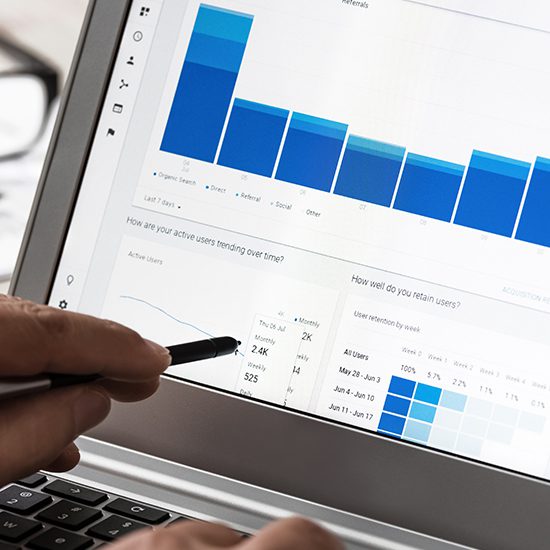by Nathan Steinmetz, Digital Marketing Strategist

Even if you’re familiar with monitoring website data, the numbers, charts and settings in Google Analytics can be intimidating. Knowing what to look for will help you interpret Google’s insight about the people who visit your website.
Understanding how website traffic fluctuates will help determine when people will seek your products or services. Your website might generate more traffic during the warmer months, or maybe most of your traffic is driven on weekdays instead of weekends. Knowing those patterns lets you strategize when to add new content or features, such as promotional offers.
Need an extra resource to get started? Here’s a link: Setting Up Your Google Analytics 4 Property for Success
Learning how users find your website lets you target their search patterns. Google Analytics segments traffic by acquisition source and evaluates performance based on that data. Do visitors reach your website organically through a search engine? Is an ad or email campaign driving traffic? Some users may find your website via social media or links from other websites.
Google Analytics profiles users who visit your website. As a result, you can view the geographic location of your visitors and the device each one uses to access your site. When you know the percentage of your audience using mobile versus desktops, you can tailor your website to better serve their technology.
GA4 gathers data on your website’s online traffic. You can analyze the pages each user visits before moving to another part of your website.
GA4 reports specific user actions, such as clicking on a phone number or making a purchase. Tracking those events and conversions helps you understand how users interact with your website. You can also create custom event-tracking for further data.
Any digital device must be able to engage and explore your site easily. GA4 distinguishes which users are visiting on mobile devices versus tablets. That way, you can measure your website’s mobile accessibility to improve SEO performance and assess user engagement.
Proper Tracking is the detailed traffic capturing that organizes your data. The program uses cross-platform tracking to measure the success of your site’s campaign.
Google Analytics evaluates data from different date ranges. This helps detect seasonal variations in your growth. You’ll receive different page views or visitors based on designated periods, either weekly, monthly or seasonal. These reviews help you compare different data subsets, giving you a time-specific view of the overall engagement on your website.
Once your strategy is in motion, treat it as a living entity. You can’t ‘set-it-and-forget-it’ and assume your strategy is self-correcting. Track your strategy to make relevant adjustments in your course of action. Rely on metrics like KPIs to improve your efficiency.
GA4 provides you with data and insights to create optimizations and solidify your brand. Apply the insights you’ve learned to optimize your digital presence.
At TouchStone, our clients are our top priority. Contact us at 419.299.9000 or visit our website at TouchStoneDigital.com to schedule an appointment.
Share article
© 2022 TouchStone Digital. All Rights Reserved. Privacy Policy. Careers.